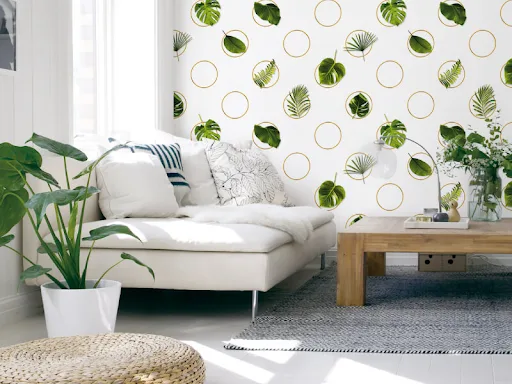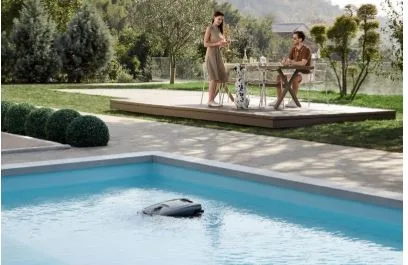Eco-Friendly SG Wallpaper Ideas for Home Decor: Sustainable Singapore Vibes
Singapore thrives as a city-state where concrete towers coexist with pockets of wild greenery, a balance that shapes daily life in subtle yet profound ways. This harmony between urban pulse and natural breath offers fertile ground for home interiors that echo the island’s spirit. Wallpapers, often overlooked as mere backdrops, hold untapped potential here. When crafted from sustainable sources, they transform walls into quiet advocates for the environment, blending local motifs with materials that tread lightly on the planet. Homeowners across HDB flats and landed properties alike seek options that capture Singapore’s verdant soul without compromising on conscience. This piece gathers fresh concepts for such wallpapers, drawing from the nation’s botanical heritage and forward-thinking ethos, all while prioritizing choices that support a lighter ecological footprint.
The Foundations of Green Wallpaper Choices
At its core, sustainable wallpaper shifts away from conventional vinyl sheets heavy with synthetic binders. Instead, it leans on substrates derived from managed forests or reclaimed fibers—think paper pulp certified by the Forest Stewardship Council (FSC), which ensures trees are harvested responsibly. These bases avoid the pitfalls of PVC production, notorious for releasing harmful chemicals during manufacturing and disposal. Adhesives follow suit, favoring water-based formulas over solvent-heavy pastes that off-gas volatile organic compounds (VOCs) for years. For those exploring sg wallpaper options, these choices provide a solid starting point, aligning everyday decor with environmental priorities.
Inks tell another story of restraint. Water-based pigments, free from heavy metals and flame retardants, dry cleanly and maintain color fidelity without fading under humid conditions—a boon in Singapore’s equatorial climate. Certifications like Greenguard Gold verify these attributes, testing for emissions that could affect indoor air quality. Such papers not only last but also biodegrade more readily at end-of-life, closing the loop in a throwaway culture. For those retrofitting older homes, peel-and-stick varieties eliminate the need for wet glue altogether, reducing waste from the installation process. These elements combine to create surfaces that breathe, much like the air-filtering plants dotting Singapore’s skyline.
Capturing Singapore’s Dual Nature in Design
What sets these wallpapers apart is their nod to the island’s layered identity: a metropolis stitched with nature reserves, where mangroves fringe reclaimed land and rooftop farms crown high-rises. Designs pull from this duality, rendering motifs that feel rooted yet refined. Native flora takes center stage, from the resilient ferns of MacRitchie to the epiphytic orchids clinging to urban branches. Subtle geometrics inspired by Peranakan tiles or kampong weaves add cultural depth, reimagined through organic lines that mimic leaf veins or ripple patterns on the Kallang River.
Color palettes draw from the spectrum of a tropical dawn—emerald greens tempered by ochre earth tones, or twilight blues laced with gold from durian husks. Textures play a role too; some options simulate the rough bark of tembusu trees or the soft weave of pandanus leaves, achieved through embossed recycled fibers rather than chemical coatings. This approach ensures walls serve as more than decoration; they become subtle storytellers of place, inviting occupants to pause amid the rush of city sounds.
Five Wallpaper Concepts Rooted in Local Flavor
Home decorators in Singapore often grapple with space constraints, making versatile patterns essential. Here, five ideas stand tailored to that reality, each leveraging eco-materials to infuse rooms with island character.
Shift to bedrooms with orchid cascades, where Vanda Miss Joaquim—the national flower—blooms in stylized clusters against a cream base. This motif uses recycled linen blends for a subtle sheen, evoking the flower’s waxy petals without synthetic gloss. Water-based dyes ensure the pinks and yellows remain vibrant year-round, and the pattern’s vertical orientation elongates narrow spaces, fostering tranquility. Local outlets such as Honpo offer variations in this vein, emphasizing flax-derived papers that are both lightweight and mold-resistant, ideal for air-conditioned interiors prone to condensation.
For dining areas, a merlion motif emerges with gentle waves lapping at its base, crafted from non-toxic PET recycled from ocean plastics. The creature’s form dissolves into abstract foam, blending whimsy with restraint to avoid overwhelming smaller tablescapes. This peel-and-stick sheet, available through eco-focused platforms like Etsy Singapore sellers, installs in minutes and removes cleanly for renters. Its coastal theme ties into the island’s maritime history, while the material choice underscores a commitment to marine conservation—waves that once threatened now safeguard.
Kitchens call for bamboo lattice patterns, mimicking the stalks that line Sentosa’s paths in interlocking grids of sienna and moss. Textured through pressed sugarcane fibers, these wallpapers add depth without bulk, and their natural oils repel grease splatters common in stir-fry sessions. Brands like Wallshoppe provide global-sourced yet locally adaptable rolls, certified for zero harmful emissions, ensuring family meals unfold in spaces free from chemical residues. The design’s modularity suits modular cabinetry, turning utilitarian walls into focal points of quiet strength.
Navigating Application and Upkeep
Bringing these visions to life demands practical forethought, especially in a climate that swings between downpours and dry spells. Start with surface prep: a smooth, dust-free wall primed with low-odor sealers prevents bubbles under the paper. For adhesive types, opt for those with natural starch binders, applied sparingly via rollers to minimize excess. In high-traffic zones, professional applicators ensure seams align flawlessly, a detail that preserves the pattern’s integrity over time.
Upkeep follows simple rhythms—dust with a soft brush weekly, and spot-clean with a vinegar-water mix for smudges, steering clear of abrasives that could dull the surface. In mold-prone bathrooms, ventilation fans paired with antimicrobial paper variants keep growth at bay. These routines extend lifespan, often to a decade or more, delaying replacement and curbing landfill contributions. For those experimenting, sample swatches prove invaluable, allowing light tests under local fluorescents.
Sourcing Options Across the Island
Singapore’s retail landscape brims with avenues for these greens. Brick-and-mortar spots like Goodrich Global in the west carry certified rolls ready for same-day pickup, while Honpo’s east-side showroom displays flax prints under natural light. Online, platforms such as Wallshoppe ship directly with carbon-offset delivery, and Etsy’s artisan collective yields one-off customs from regional makers. For bespoke needs, consult firms like HelloCircus, which blend imported eco-sheets with tailored motifs. Budgets range from S$50 per roll for basics to S$200 for textured premiums, with many offering trade discounts for bulk HDB projects. Local green building councils often spotlight verified vendors, streamlining choices for the discerning buyer.
In weaving these elements together, homes emerge as extensions of Singapore’s green mandate—spaces where walls whisper of resilience and renewal. Such decor choices not only refresh aesthetics but also align personal havens with broader planetary care, a quiet revolution one panel at a time. As the city pushes toward carbon neutrality, these wallpapers stand as accessible threads in that larger fabric, inviting all to contribute through the very surfaces that surround them.






